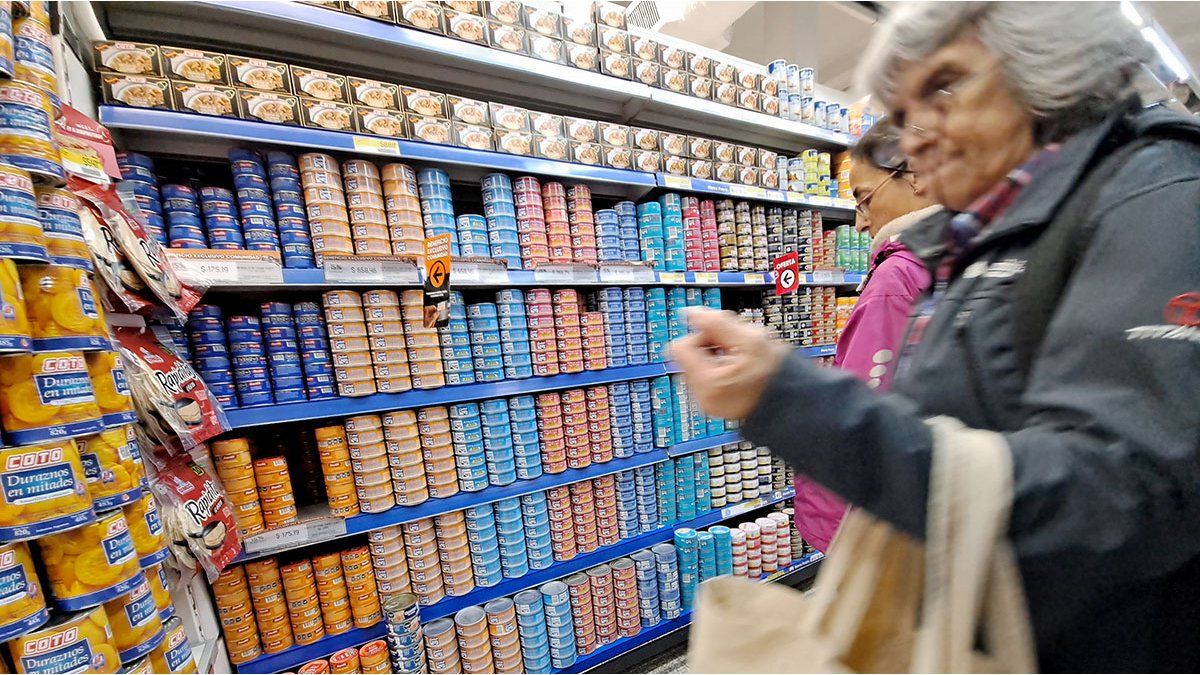In September, a month marked by a new acceleration in the inflationhe Mass consumption grew again in year-on-year terms. This is highlighted by a private report, which reported on the recovery of local self-serviceswhich in recent months had experienced sharp falls due to the price gap that exists with the large supermarket chains.
So, according to the study prepared by the consulting firm Scentia, In September, consumption grew 8.5% in interannual terms, so the accumulated increase of 1.1% for the first nine months was observed. “In this way, the positive trend of recent months is maintained, but with an interesting change in the self-service channel,” the report noted.
“Until now, this positive performance was explained, especially, by the good performance of the Supermarkets channel. which, among other reasons, due to a better price situation in such a complex economic scenario, is presented as an aid for households when it comes to taking care of their income,” Scentia explained.
Anyway, In September, the negative trend in the independent or local self-service channel stopped, which grew 4.5% year-on-yeardriven by the increase in the interior (14.7%), despite the fact that in the AMBA region it continued in negative territory (-14.3%).
“The positive of this channel was seen inside. And it is explained by an improvement thanks to the recovery of the countryside, greater dynamism in consumption in border cities, added to a lower presence of supermarket chains.negative bases of comparison and the need for people to take care of their money,” Osvaldo Del Río, director of Scentia, explained to Ámbito, who detailed: “What happened in the AMBA is different, where the decline of that channel continues, while that supermarkets continue to be positive in both geographies.”
While, In the accumulated annual figure, the local self-service channel registered a drop of 5.6% throughout the country, presenting a contraction of 16.3% in the metropolitan area and a decrease of just 0.1% in the interior.
On the other hand, supermarket chains are growing at a general level (12.6%): when detailed by geographical areas, it is observed that in the AMBA the year-on-year increase in September was 9.9% and in the interior of the country, 15%. ,1%. In the accumulated of the first nine months of the year, a growth of 8.7% is observed in supermarkets, with similar increases both in the AMBA and in the interior.
This difference in consumption levels between the different channels is explained, mainly, by the price gap due to a greater presence of products included in Government programs. “The gap exceeds 35% on average,” explained Del Río.
Coverage effect
He “covering effect” or as a “refuge” Given the acceleration of inflation, it may be one of the factors that explain the growth in mass consumption during the last month. “The Government was raising, via bonuses, salary improvements and credit expansion, some of the anchors that existed in the economy to avoid an inflationary acceleration. Based on freezes with a scheduled expiration date, a drop in demand for the peso is observed. Argentines exchange pesos for goods more quickly before the next electoral process, in order to seek refuge from the loss of purchasing power of the peso”said Damián Di Pace, director of the consulting firm Focus Market.
In that line, the Consumption Indicator (IC) prepared by the Argentine Chamber of Commerce and Services (CAC) showed an increase of 1.4% year-on-year in September, which implied a contraction of 0.6% in the seasonally adjusted measurement compared to August. In this way, the IC accumulated a growth of 2.5% in the first nine months of the year.
“The positive data in the year-on-year comparison occurs in a context of relative stability in the exchange rate, both official and parallel (the jumps in parallel quotes were concentrated in August and October). The inflationary acceleration observed in the August/September two-month period had a correlation in consumption levels. Households, seeking to reduce their peso holdings, consumed at an accelerated rate. In addition, bonuses, economic reinforcements and VAT refunds managed to positively impact the purchasing power of households in September. However, inflation is still expected to be high and so that its effect does not reduce the purchasing power of consumers in the future, new economic policy measures will be necessary,” the CAC study highlighted.
Source: Ambito




